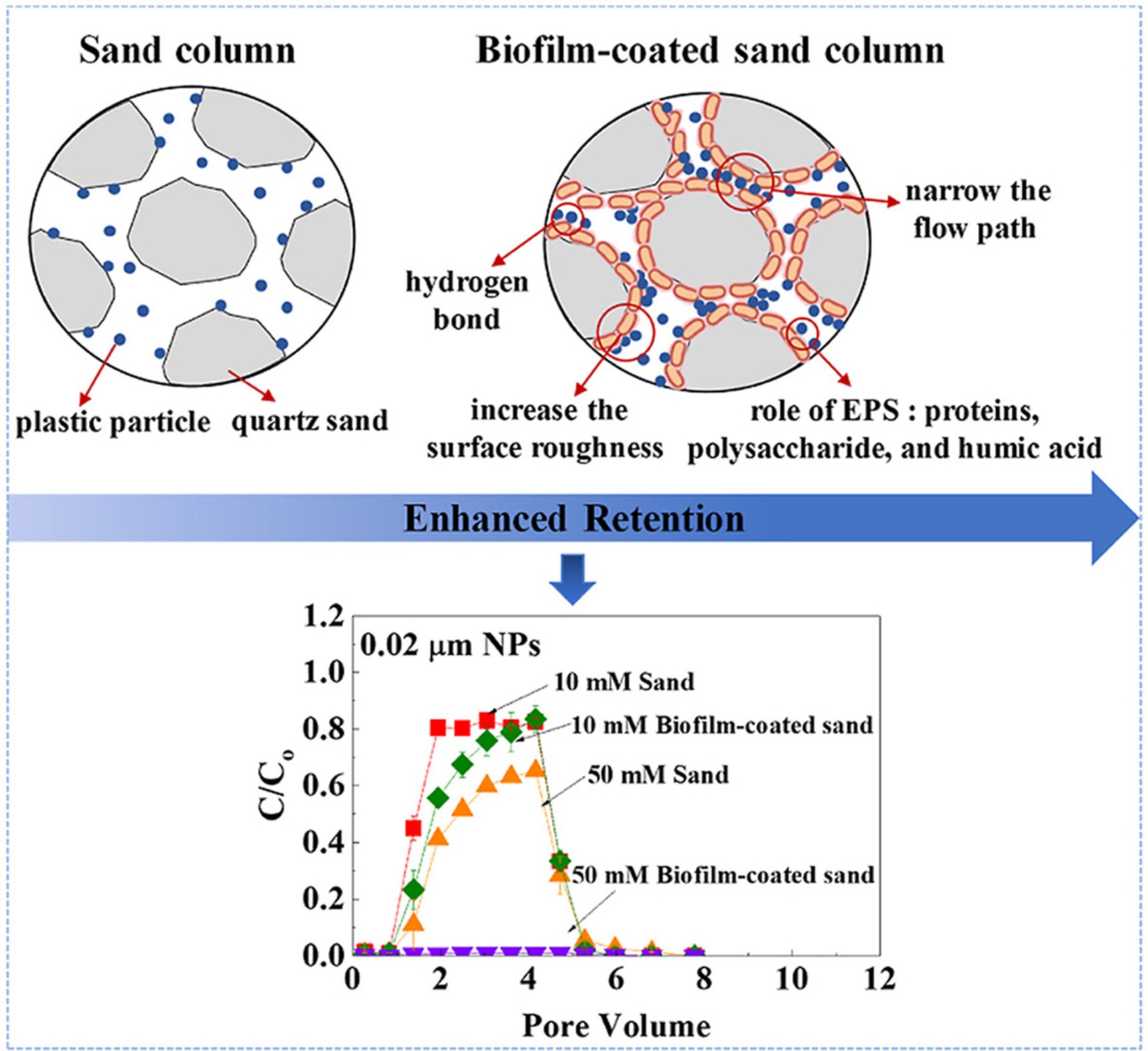
Lei, He; Haifeng, Rong; Dan, Wu; Meng, Li; Chengyi, Wang; Meiping, Tong
https://doi.org/10.1016/j.watres.2020.115808
Abstract
Biofilm, community of bacteria ubiquitously present in natural environment, may interact with plastic particles and affect the transport of plastic particles in environment. The significance of biofilm (Escherichia coli) on the transport and deposition behaviors of three different sized plastic particles (0.02 mu m NPs, 0.2 mu m MP and 2 mu m MP) were examined under both 10 mM and 50 mM NaCl solutions by comparing the breakthrough curves and retained profiles of plastic particles in bare sand versus those in biofilm-coated sand. Regardless of ionic strengths, the presence of biofilm increases the deposition of all three sized plastic particles in porous media. Via employing X-ray microtomography imaging (XMT) and Scanning electron microscope (SEM), we find that the presence of biofilm could narrow the flow path especially near to the inlet of the column and increase the surface roughness of porous media (by decreasing DLVO repulsive interaction), which contributes to the enhanced the deposition of plastic particles. Extracellular polymeric substances (EPS) present on the biofilm are found to contribute to the enhanced deposition of plastic particles. Packed column experiments, quartz crystal microbalance with dissipation (QCM-D) as well as parallel plate flow chamber experiments all show that three major components of EPS, proteins, polysaccharide, and humic substances all contribute to the enhanced deposition of plastic particles. O-H and N-H groups present on cell surfaces are highly likely to form hydrogen bond with plastic particles and increase the deposition plastic particles. Elution experiments show that decreasing solution ionic strength could release small portion of plastic particles from both bare and biofilm-coated sand columns especially from the segments near to the column inlet (with slighter lower percentage from biofilm-coated columns based on the total mass of retained plastics). In contrast, increasing flow rate does not obviously detach the plastic particles that already deposited onto porous media. The results of this study clearly show that the presence of biofilm in natural environment could enhance the deposition and decrease the transport of plastic particles. (C) 2020 Published by Elsevier Ltd.
